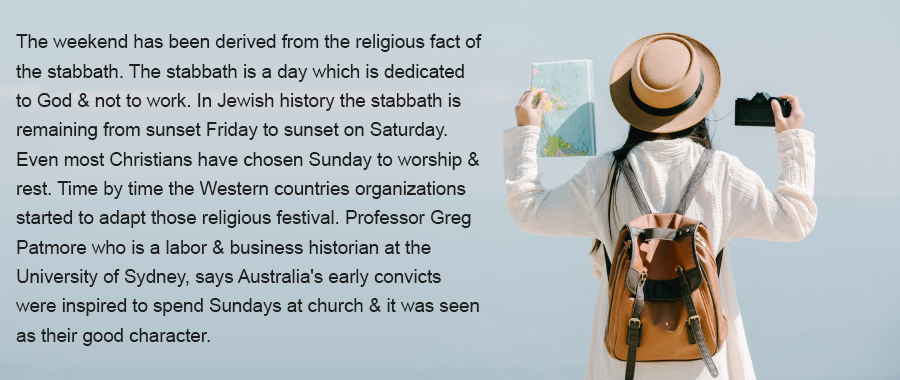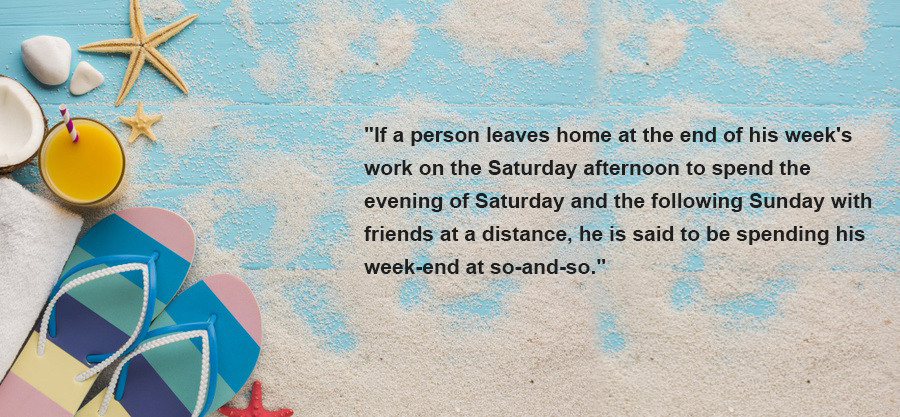The Story Behind The Weekend

“Weekend” a magical time period where we can say ‘YES’ to all of our plans with lots of enjoyment. Those memories capture all the sequences of our movement which we went through the entire 48 hours in 2days.
There are sixty-three beautiful hours between the time we leave work on Friday & when we draw ourselves to Monday. We are mostly planning our lives throughout the week. After scheduling five days work, then we are settling our social, personal & enjoyable events for those two days we have really for ourselves.
Historical Concept:

Saturday Story:
Started from Britain:
18th & 19th century workers in Britain they were seeking for longer rest from the week long hard working condition of industries. Oppose to farming, Industrialization depend on the daylight & the requirement of the farm.
Author Witold Rybczynski in Waiting for the Weekend noted that employees also wanted to provide much time to workers for recovering from drinking. This is how many employees spent their time off. So, a shorter or half-day Saturday was notice as a natural beginning of Sunday, the day of rest.
The Oxford English Dictionary discovers the first use of the word “Weekend” to 1879, when British magazine Notes & Queries detected:

Reason behind Saturday & Sunday as our weekend:
In the 19th century, regular increasing number of British factories gave half day off on Saturday to their workers for refreshment & return on Monday. But after decades the campaigning of the labors for few hours led to full day off.
In 1908, a textile mill in New England has decided to give all employees a five day week. It happened in the United States. This was done to solve the issue of Jewish workers not being available on the Sabbath & the Christian staffs were demanding the same treatment. Other factories slowly started following the model as of the labor movement behind the idea.
In 1938, the Fair Labor Standards Act gave Americans the advanced 42-hour five-day work week. This act is pass to respond to both increasing labor power & firmly high unemployment rates. The five day week was adapt in the whole of Europe by the 1970s.

How did the two-day weekend evolve in Australia?
Professor Patmore says Melbourne & Sydney stonemasons in 1856 are some of the first people in the world for campaigning successfully for an eight hour workday. Behind this campaigning, they showed the reason that laboring long hours in the Australian heat was bad for their health.
Australia earn a reputation as a “working man’s paradise” But it was not until 1916 when an eight hour day was common, even then most people work close to nine hours each day from Monday through Friday & Four hours on Saturday.
The work week was finally reduced to 40 hours in 1948 & to 38 hours in 1983. In the post war era, when families had much time & money for relaxation & vacation, the two day weekend became standard.






